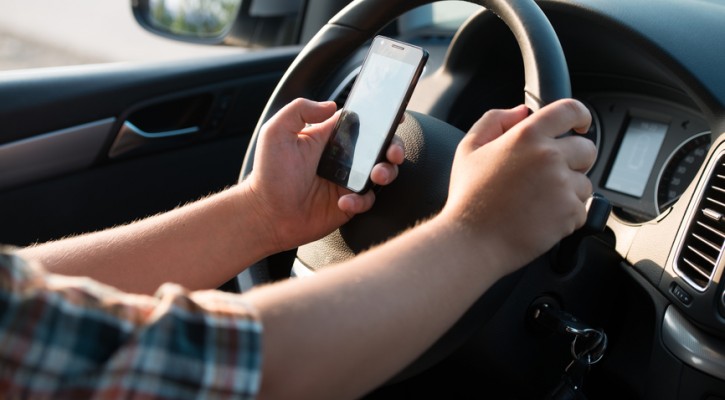Tag Archive: Florida
New Florida Driver’s License/ID Card Requirements for 2011
October 18, 2010
Florida enacted a new law on January 1, 2010, in order to comply with the federal Real ID Act, passed by Congress in 2005. Florida’s new law requires more positive proof of identification for anyone trying to get a license or a Florida ID card.
Lack of awareness of this law has resulted in a lot of customers at the DDL office who were turned away for lack of proper proof of identification. If you are planning to visit the DDL anytime soon, you will need to carry the required items of documentation with you if you need to:
- Apply for a new license or ID card
- Renew a license or ID card
- Change your name
- Change your address
- Replace a lost or stolen license
(If there are no changes, simple renewals can still be done online at: http://www.flhsmv.gov/html/online.html )
Primary Identification (proof of citizenship or legal presence). You need to provide ONE original or certified copy of any of the following:
- Certified United States birth certificate
- Valid United States Passport or Passport Card
- Consular Report of Birth Abroad
- Certificate of Naturalization, Form N-550 or Form N-570
- Certificate of Citizenship, Form N-560 or Form N-561
If a birth certificate is your chosen form of primary identification, then it must come from a government agency; hospital birth certificates are not accepted.
When necessary, marriage certificates, court orders, or divorce decrees must be provided to tie the name on the primary identification to the name the customer would like to place on the driver license or identification card.
Those born in Puerto Rico must present an new, updated birth certificate after September 30, 2010.
2. Proof of Social Security Number. Provide ONE original or certified copy of any of the following that proves your social security number tied to your full name.
- Social Security Card (must be an original and must be under name being applied for)
- W-2 Form
- Pay check/stub
- SSA-1099
- Any 1099 (not handwritten)
If an applicant currently does not have a social security number, one must bring a letter from the Social Security Administration indicating that the applicant was not issued one. In addition, secondary identification is required, which could be any of the following:
- A driver license from the District of Columbia, U.S. Territories or one from the 50 states
- School record starting date of birth, with the registrar’s signature
- Transcript of the birth record
- Baptism certificate, with the date of birth and place of baptism
- Family Bible record
- An insurance policy on the applicant’s name, which has been in place for at least 2 years
- United States military or military dependent identification card
- An identification card from the District of Columbia, U.S. Territories or one from the 50 states
- Florida license record or identification card record
- Selective Service Registration
- Florida Vehicle Registration Certificate (HSMV 83399, owner’s copy) or out-of-state registration certificate with name and date of birth
- Receipt copy of last Florida driver license issuance
- Immigration form I-571
- Federal form DD-214
- Marriage certificates
- Court order, which includes applicant’s legal name
- A Florida voter registration card, which was issued at least 3 months previously
- Parent consent form of minor, signed by the parent or legal guardian
- Government issued out-of-country passport, driver license or identification card
- Concealed weapons permit
Making the social security number a requirement reinforces the idea that social security is indeed, for social security.
3. Two Proofs of Residential Address. Bring TWO different documents that confirm the applicant’s residential address. It could by any TWO of the following:
- Deed, mortgage, rental/lease statement
- Florida Voter Registration Card
- Florida Vehicle Registration or Title
- Florida Boat Registration or Title
- TWO Proofs of residential address from a parent/legal guardian, along with a statement from a parent/legal guardian with whom the applicant resides with
- A utility hook up or work order dated within 60 days of application
- Automobile Payment Booklet
- Selective Service Card
- Medical/Health card with address
- Current homeowner’s insurance policy/bill
- Current automobile insurance policy/bill
- Transcript forms from current school year
- Unexpired professional license issued by government agency in the U.S.
- W-2 form or 1099 form
- Form DS2019, Certificate of Eligibility for Exchange Visitor (J-1) status
- A letter from a homeless shelter/transitional service provider/half-way house verifying that they receive mail for applicant
- Certificate of Address Form
- Utility bills
- Mail from financial institutions
- Mail from federal State, County or City government agencies
If an applicant’s current driver’s license has a P.O. Box under address, records must be updated that verify an applicant’s physical address. The address will be placed when the applicant next renews his/her license.
For more information, visit: http://www.gathergoget.com/

Why You Should Take a Drug and Alcohol Course: A Note about Marijuana and Driving
January 5, 2009
Of course, a Florida drug and alcohol course is mandatory; you’ll have to take it so you can get your driver’s permit. But a certificate isn’t the only thing you should take away from the class – the knowledge you gain could one day save your life.
Drinking alcohol and driving gets a lot of attention, both in driver’s education courses and in the media, and it should; many teens die in alcohol-related crashes each year. But some teens forget about or ignore the effects of illegal drugs on driving, particularly with drugs that are incorrectly perceived to be harmless, like marijuana. But marijuana, whether used alone or in combination with alcohol, is anything but harmless for any driver.
By far, marijuana remains the most widely used illegal drug among teens. The main active chemical in marijuana is THC (delta-9-tetrahydrocannabinol). Short-term effects of marijuana use include problems with memory and learning, distorted perception, difficulty in thinking and problem-solving, loss of coordination, and increased heart rate, anxiety, and panic attacks.
After alcohol, marijuana is the substance most frequently found in fatal automobile crashes. Even a moderate dose of marijuana can impair driving performance. Alcohol and marijuana are also often found together, resulting in a dramatic spike in impairment levels and decreased driving performance. The effects of a low dose of marijuana combined with alcohol are much greater than for either drug alone.
Combining any two drugs, or a drug with alcohol, may result in the synergistic effect. This means that the combination of drugs produces effects that are greater than the sum of the effects of the two drugs. This is called an additive effect; instead of a 1 + 1 = 2 result, the synergistic effect may cause a 1 + 1 = 3 result.
Remember, any drug that affects your safe driving can mean a DUI – or worse.
Getting your Florida learner’s permit requires certain steps. Here is a useful Learners Permit checklist to get you started.

Florida Police Officers Worry About Distraction and Safety
April 27, 2007
As the parent of a teenage driver, Police Chief Roger Boatner, of Lakeland, Florida worries when his daughter is behind the wheel. However, his worries are not with her own driving skills or with the locations she visits. He worries most about the many drivers he sees doing nearly everything but driving as they cruise down the street.
Those who spend even a few seconds changing a CD, answering the cell phone, or taking a bite of a sandwich can cause a serious accident. Other troopers agree with the seriousness of the problem of distracted driving. Larry Coggins of the Florida State Highway Patrol claims that in every crash there can be some type of driver error found.
Many studies have been done on the effects of cell phones and other distractions while driving. While exact numbers have varied, the basic results have been the same.
- Virginia Tech’s Transportation Institute found that drivers who talk on cell phones are 4 times more likely to be involved in a serious crash.
- The National Highway Traffic Administration carried out a study, which found that more than 75% of crashes and 66% of near misses occurred when drivers were engaged in conversations on cell phones.
- The University of Utah carried out an experiment that resulted in the conclusion that drivers talking on cell phone were just as impaired as an intoxicated driver.
Results such as these have caused a few states to pass laws prohibiting all drivers from talking on cell phones while behind the wheel. Even more states have implemented similar laws, but focused them only on teenage drivers. Unfortunately, Florida is yet to have created one of these laws.
The Sheriff’s Office in Polk County, Florida has decided that these messages are so important that they have placed them on their phone system as a hold message. Additionally, they remind drivers of the importance of wearing their seat belts.
The Polk Sheriff’s Office handled 50 traffic deaths within their jurisdiction. Of these, officers believe that at least 14 lives would have been saved if the victims had been wearing a seat belt. To prevent more of these accidents from claiming the lives of young people, Florida has enacted a law allowing officers to pull cars over if passengers under the age of 18 years old are seen unrestrained.
